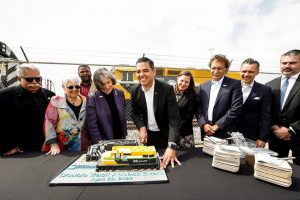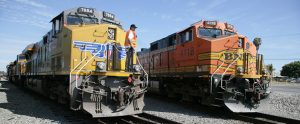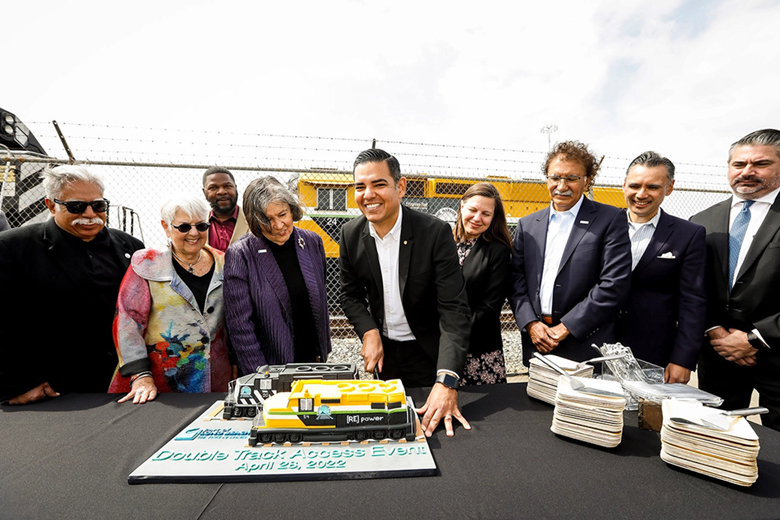
The Port of Long Beach in late April revealed that it has completed construction of a new rail project that’s expected to increase efficiency of goods movement and reduce congestion on local roadways by shifting more cargo to trains.
The “Double Track Access from Pier G to Pier J Project,” as it’s known, adds a second rail line running about 8,000-feet long that enables four terminals in the port’s south basin area to simultaneously handle arriving and departing trains.
The project is a piece of the port’s ongoing infrastructure capital improvement program, which is aimed at shifting more cargo to rail, which would further reduce harmful air emissions that originate from the port and affect the surrounding areas.
“Our rail projects strengthen the port’s ability to compete for cargo in a rapidly involving industry while alleviating truck traffic on our region’s freeways,” Long Beach Harbor Commission Vice President Sharon Weissman said. “Rail projects like this one will increase our capacity without putting more trucks on the road. In fact, the estimate is that this project alone will help us eliminate
3.3 million truck trips over the next 20 years.”
“This project is an important piece of the rail improvement program that will increase efficiency and lower emissions at our port,” added Long Beach Mayor Robert Garcia.
“Despite the disruption to the global supply chain and the most tragic health pandemic in over a century, the Port of Long Beach continues with its capital improvement plan,” POLB Executive Director Mario Cordero said during an April 28 ceremony marking the project’s completion. “The construction projects here at the Port of Long Beach have been challenging the last two years given the impacts of COVID, but again, as we have said before, in crisis, the Port of Long Beach builds.”
Construction of the Double Track Access project began in February 2020, with the aim of increasing rail efficiency at Piers G and J by up to 25%. The project is also expected to minimize conflict with neighboring terminals’ on-dock rail operations and improve overall safety in the vicinity, according to port officials.
The $34.7-million project was partially funded with a $14-million grant from California’s Trade Corridor Enhancement Program, which was established by Senate Bill 1 to pay for infrastructure improvements on federally designated freight networks. The program uses money from the State of California and the National Highway Freight Program.

The port contributed the remaining funds for the project, which was completed early and under budget, according to port officials.
“Over the next 10 years, we will be spending $1.5 billion on capital improvement projects,” Cordero said.
During the ceremony, Anne-Marie Otey, spokeswoman for the Los Angeles/Orange Counties Building and Construction Trades Council, an umbrella group representing 48 local unions and district councils in 14 trades, lauded the dozens of tradesmen and women who worked on the project during the two-plus years that it was being constructed in the midst of the pandemic.
“The port never, ever, ever stops working. And that makes me think very, very much of all of our Building Trades members—they never stopped, just like you (who are) involved in the construction business and the port, ” Otey said. “Our ports never stopped, our city government never stopped, our Building Trades members never stopped. No matter what safety precautions they had to take on the site, they met the challenge.”
“We appreciate our partnership with the City of Long Beach, with the Port of Long Beach,” she remarked. “We look forward to working with you toward the future greening of the port.”

